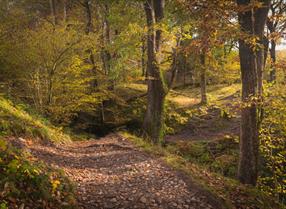About
Along with Llanthony Priory and Tintern Abbey, the ruins of Neath Abbey are the most important and impressive monastic remains in south Wales.
Neath Abbey was initially founded in 1130 by the Norman knight Sir Richard de Granville for a community of Savigniac monks. In 1147 the Abbey was absorbed into the rapidly expanding Cistercian monastic order and by the late 13th century it had become one of Wales’s wealthiest abbeys. Around 50 monks lived here, alongside an even larger number of lay brothers who worked at the abbey’s estates on tasks which probably included mining coal for domestic use.
Much later, the heavy hand of the Industrial Revolution was almost its downfall, the abbey becoming a copper smelting plant with furnaces, workshops and workers’...Read More
About
Along with Llanthony Priory and Tintern Abbey, the ruins of Neath Abbey are the most important and impressive monastic remains in south Wales.
Neath Abbey was initially founded in 1130 by the Norman knight Sir Richard de Granville for a community of Savigniac monks. In 1147 the Abbey was absorbed into the rapidly expanding Cistercian monastic order and by the late 13th century it had become one of Wales’s wealthiest abbeys. Around 50 monks lived here, alongside an even larger number of lay brothers who worked at the abbey’s estates on tasks which probably included mining coal for domestic use.
Much later, the heavy hand of the Industrial Revolution was almost its downfall, the abbey becoming a copper smelting plant with furnaces, workshops and workers’ dwellings, and having an ironworks as its next-door neighbour.
Virtually the entire layout of the abbey and its buildings can still be seen today, confirming the sheer scale of this prosperous religious settlement.
Read Less



 to add an item to your Itinerary basket.
to add an item to your Itinerary basket.
















